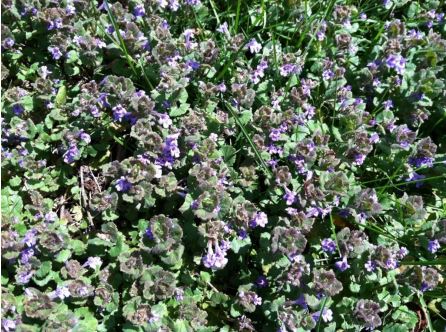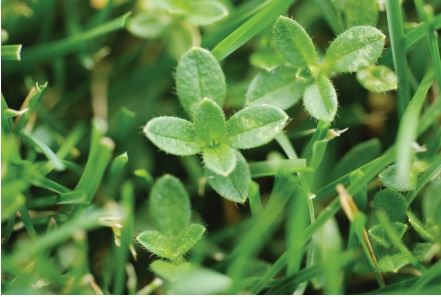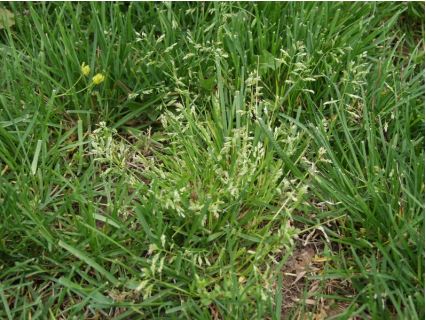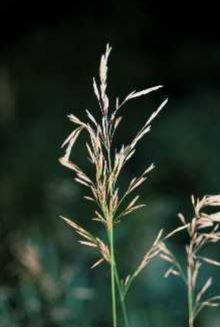
Arrow Exterminators, Inc. is posting this blog to help the local residents learn more about the common weeds of Oklahoma that germinate in the fall. We are hoping that by knowing what these common weeds look like, you will be able to prevent them from taking over your yard this year!
Common Chickweed
Photo Courtesy of Bob Mann

Stellaria media Chickweed is a low growing, mat-forming winter annual with numerous branched stems. This weed disappears in the heat. Leaves are opposite, smooth, oval to broadly elliptical in their shape. Upper leaves are often without petiole; lower leaves with a sparsely hairy long petiole. Stems have vertical lines of hairs. Flowers are star shaped in small clusters at ends of stems, white, with five deeply notched petals. Chickweed reproduces by seed. Located throughout North America except for the Rocky Mountains. Also found in Mexico, Central and South America.
Chickweed prefers poorly drained shady areas. Maintain a healthy vigorous well drained lawn for best control. Contact your local Cooperative Extension Service or landscape supplier for product information.
Henbit
Photo Courtesy of Bob Mann

Lamium amplexicaule Henbit is a sparsely hairy winter annual weed. It has greenish-purplish, four sided stems. Upper leaves lack petioles. Leaves are opposite, broad egg shaped and has bluntly toothed edges. Prominent veins on the underside of the leaves. Flowers are reddish-purplish with darker spots on the lower petal. Plants reproduce by seed and are found throughout most of North America. Henbit occurs in thin turf and in landscape beds. With a fibrous root system, it can reach a height of more than 12 inches. Both shade and good soil moisture encourage growth. In landscape bed use hand removal and good mulch cover to suppress growth and development. In turf areas henbit is typically best controlled with pre-emergent products. For specific control recommendations, contact your local Cooperative Extension Service or your landscape supplier.
Mouse-Ear Chickweed
Photo Courtesy of Bayer

Cerastium vulgatum
Mouse-ear chickweed is a cool season perennial with hairy leaves and creeping prostrate stems. Leaves are noticeably hairy or fuzzy, long and narrow and opposite on the stem. Flowers are small white with five petals, blooming in late spring. It produces an abundance of weed seeds. It can grow up to 20” tall but is often much shorter and can tolerate close mowing. It is often found in lawns, landscape beds pastures, roadsides and farmland. Mouse-ear chickweed is found throughout the United States and Southern Canada. Maintaining proper nitrogen and soil pH levels will keep a thick dense turf and help control this weed. Sparse turf allows for chickweed to easily develop and spread. If product control is necessary, check with your local Cooperative Extension Service or landscape supplier for recommendations.
Poa Annua or Annual Bluegrass
Photo Courtesy of Bayer

Poa Annua
Annual Bluegrass is clumped-forming, cool season winter annual plant. Leaf blades are smooth, but can also be rippled or wrinkled, with two distinct, clear lines, one on each side of the midrib. Leaf tip is kneeled or boat-shaped. Light green to whitish flower spikes/seed heads are very showy in dense flower clusters. Reproduces by seed. Found throughout the world. Very distinguishable in dormant turfs and other cool season turfs because of the prolific seedheads. Maintain proper pH and a dense turf. Aerate compacted turf. If you use a preemergent for control, fall timing is best. For product selection check with your local Cooperative Extension Service or landscape supplier.
Smooth Brome

Bromus inermis
©Larry Allain
@USDA NRCS PLANTS Database
Smooth brome, is a leafy, sodforming, perennial, cool season grass that spreads by rhizomes. This species is both native and introduced. The stems vary in height from 2 to 4 feet. The plant produces numerous basal and stem leaves that vary in length from 4 to 10 inches. Frequently the leaves are marked by a transverse wrinkle resembling a “W” a short distance below the tip. The flower head develops a characteristic rich purplish-brown color when mature. The seed is produced in semi-compact 5 inch long panicles with ascending branches. The flat compressed seed is usually awnless, about 1/3 inch long, and smooth. There are approximately 136,000 seeds per pound. Smooth brome is the most widely used of the cultivated bromegrasses and has been cultivated in the U.S. since the early 1880s.
CRANESBILL (Geranium carolinianum)

Photo Courtesy of USDA Forest Service
Other names: Carolina geranium, cutleaf geranium. Growth habit: This freely branched annual weed remains prostrate in turf. Fine hairs are found on the stems and leaves. Leaves: Leaves are deeply dissected into five to seven lobes. Each lobe is again lobed and bluntly toothed on the margins. Stems: The branching stems are grown along the ground and have fine hairs. Flowers: Two to several conspicuous, small flowers are borne together on stalks from the upper nodes. It blooms mostly in April and May. Individual flowers have five pink to lavender petals. Seed: Seeds have a conspicuous “cranesbill” beak about 1/2 inch long.
Shepherd’s Purse

photo: https://extension.okstate.edu/fact-sheets/weedy-mustards-of-oklahoma.html
Shepherd’s-purse is a winter annual or biennial mustard that can reach up to 1.5 feet tall. Flowering is initiated in the spring and can persist until early summer, depending on the weather. Flowers are green or white, very small and difficult to see to the untrained eye. During the first growing season, it appears as a prostrate rosette with deeply lobed leaves and is 2 to 5 inches long and ½ to 2 inches wide. Siliques are distinctly heart-shaped, conspicuously divided into two compartments. The fruit shape is very helpful in distinguishing this species from other similar plants. ©Oklahoma State University Extension





